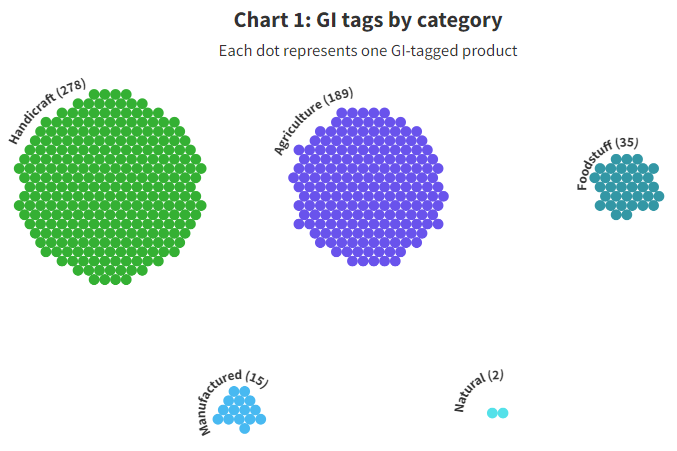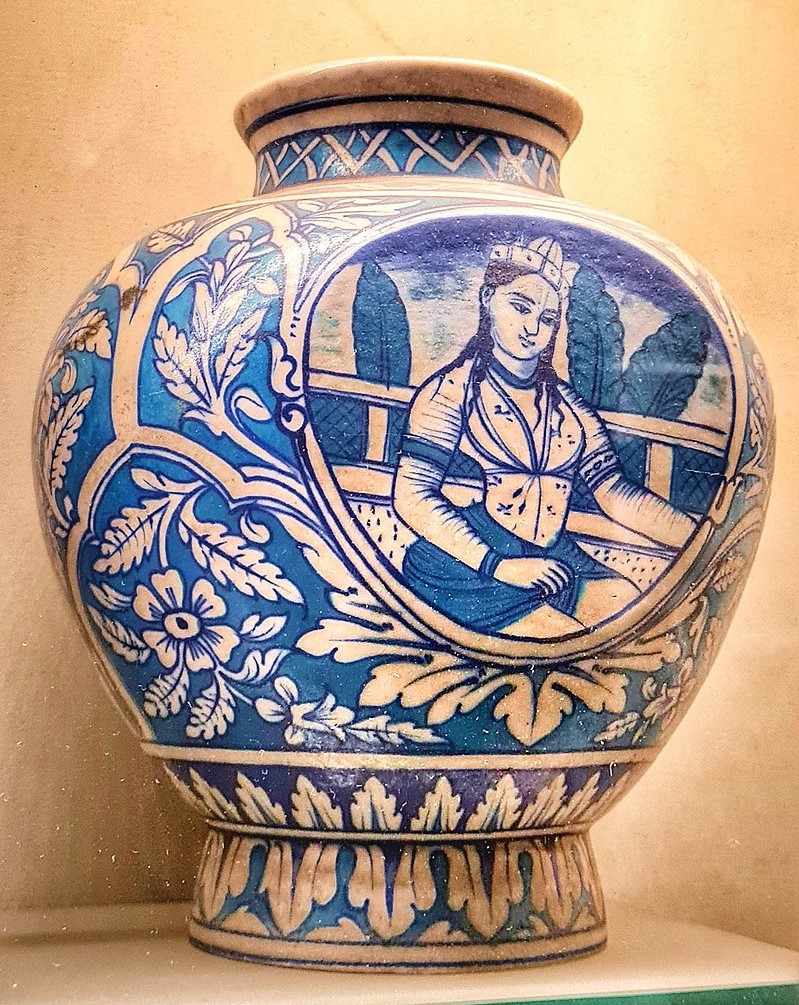Imagine the fireworks in your taste buds as you sink your teeth into a delectable, juicy mango. Or activating your senses with a steaming cup of aromatic coffee from the hills.
Any place you go to in India, there’s always something famous. If you just say “laddu” or “orange”, it might not mean much. But prefix the place name “Tirupathi” and “Nagpur” to these items, and they acquire a whole new dimension. Everyone loves the eponymous Tirupathi laddu and Nagpur orange.
These unique items have achieved a degree of finesse and craftsmanship that surpasses all else. There might be others, but the item and location combination is what a Geographical Indication tag (GI tag) is all about.
The below is an interactive. Tap/click on each image or navigate using swipes/scrollbar.
Any trader’s body, association, or organization can apply for a GI tag. The applicants need to prove, in their application, the uniqueness of the item with historical records and a complete breakdown of how the product is made.
GI tags are also not meant just for popular products. There are hundreds of GI tags cutting across states, cultures, and communities, and each GI tag is a testament to the diversity of India.
Every GI tag recognises a particular region and product and brings it to the public eye — There are dozens of feature articles online lamenting the “disappearing art/craft” of XYZ. Hopefully, a higher power or someone in power sits up and takes notice.
Each reputation was carefully built up and painstakingly maintained by the masters of that region, combining the best of Nature and Man, traditionally handed over from one generation to the next for centuries.
GI tags FAQs page, govt. of India
Gradually, a specific link between the goods and place of production evolved, resulting in growth of geographical indications
An interesting bit about GI tags is that the raw materials may not come from that region itself (unless it’s an agricultural tag). For instance, the leaf that gives the Banarasi paan its identity is not grown in Varanasi: it is from Bihar, West Bengal or Odisha. The mulberry silk used in Kancheepuram sarees comes from Karnataka and the gold zari comes from Surat.
There are over 500 GI tags as of December 10, 2023. I wouldn’t like to commit to a number because of the reasons listed at the end of this story.
The melting pot of cultures
There are 34 classes of products that can get GI tags, right from chemicals and paint to foodstuff, handicrafts, musical instruments, and even firearms and locomotives.
The existing products in the GI registry fall under five major categories as shown in the visualisation below.
Explore the complete visualisation. Play around with “Group by” and “Shade by”. Each dot represents one GI-tagged product. Tap/mouse over each dot for more info.
Open the visualisation in a new window to explore more.

We see that handicrafts dominate the list, with over half the GI tags being crafted by skilled artists.
Making a statement
Every single state in India has at least one GI tag, and except Jharkhand, every state has at least one GI tag in the agriculture category.
Something to keep in mind is that while GI tags are a proxy for unique cultural items, they are by no means exhaustive: A state having more GI tags doesn’t necessarily mean it’s more culturally rich; it just means more items have been registered, with many yet to come.
The below is an interactive. Tap/click on each state’s name in the visual to get more information on that state’s GI tags.
Tap/click on the state’s name in the above visualisation to get more detailed information.
If you’d like to open the visualisation in a new window, click here.
Tamil Nadu (61) has an outsized number of GI tags compared to other states (coincidentally, the GI registry is based in Chennai).
In the southern state where idlis and dosas are a way of life, GI tags like the Coimbatore wet grinder (for making batter) are no surprise.
The second highest number of tags is from Uttar Pradesh (56). Given the rich culture of India’s heartland, there are quite a few items on offer. Interesting tags include leather footwear from Agra, saddles from Kanpur, and Chikankari craft from Lucknow.
The next highest number of GI tags belongs to Karnataka (48), with a wide range of agriculture and handicrafts. Kerala (39) and Maharashtra (35) are next on the list.
When kite-flying led to a unique pottery style
The Maharaja of Jaipur in the mid 19th Century, Sawai Ram Singh II, was a kite enthusiast. Legend has it that he once witnessed a kite-flying session between his kite masters and two brothers from present-day Uttar Pradesh. The two brothers were able to bring down the royal kite almost every time.
When the king asked how they managed it, the brothers said that they were potters by profession and had coated their kite strings with the blue-green glass used for their pots. Sawai Ram Singh invited the two brothers to Jaipur to teach this craft of glazed pottery at his art school. Thus began the GI-tagged craft of Jaipur’s blue pottery.
Source: Livemint
Image source: Wiki

Places steeped in culture
Ancient cultural centres like Banaras (Varanasi) are steeped in culture and tradition. Banaras offers 11 unique crafts and agricultural items (the highest from a single place), including the melt-in-the-mouth Banarasi paan.
The heritage city of Mysore, ruled for centuries by the Wodeyar dynasty, has 10 unique items, including the special variety of jasmine (Mysore mallige) and fragrant sandalwood soap.
The Tamil city of UNESCO World Heritage sites, Thanjavur, was a bustling cultural capital of the Cholas. Thanjavur paintings and Thanjavur’s iconic bobblehead dolls find a place among the five GI tags the city has to offer.
Notes
- The data was scraped from the GI tags registry on December 2
- The data was cleaned and for clarity, categorised into 5 major categories. Only Indian GI tags were considered.
- Some GI tags belong to more than one state. For instance, Basmati rice belongs to six states and one UT: Punjab, Haryana, Himachal Pradesh, Uttarakhand, Uttar Pradesh, (Former) Jammu & Kashmir, and Delhi. In these cases, I’ve added one GI tag to each state it belongs to.
- Jammu and Kashmir has been considered as the undivided state of J&K unless specified.
Sources
- Image carousel: 1, 2, 3, 4, 5, 6, 7
- Scoville scale, Atlas Obscura, The Hindu, Outlook Traveller, Wikipedia
- GI tags registry
Leave a Reply